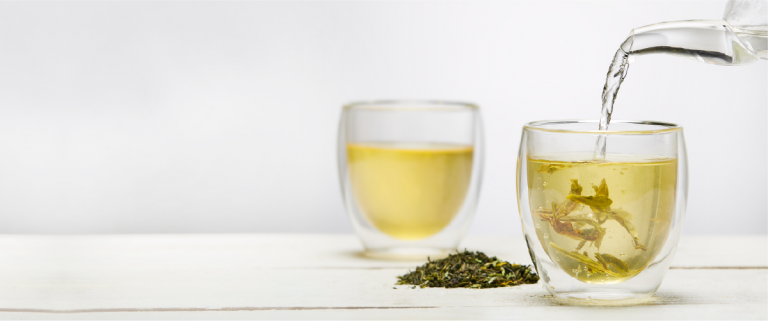Green tea is one of the least oxidized tea type. It is made from young tea leaves plucked towards the close of the flush or harvest season after the production of white, oolong, and black teas. Although this tea originated in China, it is now widely produced in almost every tea growing region of the world with some of the best kinds now being made in Japan, India, Taiwan, Kenya, and Sri Lanka.
Orthodox green tea offers a greater variety of fragrance and flavors that range from cooked vegetables and charred greens to grass, nuts, and citrus. This comes from the manufacturing stage when slight changes in processing method can impact the chemical and aromatic composition of the green tea.
Much of the world has become obsessed with this tea because of the supposed benefits of green tea in aiding weight loss and helping prevent cardiovascular diseases and many kinds of cancers, too. However, these benefits are largely presumed and not substantiated by verifiable in vitro studies. But it must also be mentioned that preliminary in vitro studies have established a positive correlation between regular consumption of green tea and good health. Although green tea is an incredibly healthy beverage some may worry about its caffeine content. If you want to know how much caffeine green tea has you’ll be glad to know that it has much less caffeine content than coffee and most other teas, and is also perfectly safe to consume.
How is green tea made?
Unlike black tea or oolong tea, green tea is a non-fermented type of tea, indicating that it has undergone no oxidation. The traditional method of processing these teas involves light withering (although not practiced widely) followed by heating (also referred to as ‘fixing’), rolling, and drying.
Fixing
Once the leaves are plucked, they are immediately taken to the factory to be “fixed” or de-enzymed (by application of heat). This prevents the leaves from oxidizing and turning brown. Fixing can be carried out in pans or woks set over wood stoves or steam tunnels. Depending on the choice of fixing method and extraction conditions, a tea will develop particular kinds of flavor. For example, slowly pan-fixed green tea tastes sweeter than high-fired tea.
Rolling
Once fixed, leaves are rolled (either by hand or a rolling machine) and given their final shape. The process of rolling helps break down the cell walls and extract aromatic compounds that are concentrated across the many layers within a leaf.
Drying
Next comes drying which is carried out in industrial dryers or pans. Drying is carried out until the moisture content is reduced to about 1% of the total weight of the leaves.
How many types of green tea are there?
To manufacture green tea, freshly plucked tea leaves are heated at a very high temperatures for a fixed period of time followed by rolling and drying. However, fresh leaves can be heat-treated in a variety of ways, depending on the style of green tea desired. For instance, artisanal production makes use of sun-drying, charcoal firing or pan-firing as a technique for fixing the leaves while modern green tea producers make use of oven-drying, tumbling, or steaming as a preferred fixing technique.
Further, green teas are not graded like black teas; instead tea producers have a grading system based on the style and the size of the finished leaf. Broadly, there’s the folded leaf green tea such as the Chinese Longjing and Japanese sencha green tea, and the twisted leaf, such as the Chun Mee or Nepal’s Ilam greens.

The Japanese green tea grading is more nuanced with the lowest grade being kukicha, which refers to tea made from the twigs and stems of the tea plant, going all the way up to gyokuro and matcha green tea, the highest grades. The matcha green tea benefits are ones to watch out for, especially from matcha green tea powder. Made from the nutrient-rich young leaves, the effects of the green tea is mostly calming. It also helps boost memory and concentration. And the best part is that it helps burn calories.
Green Tea Benefits:
As you know by now, green tea is a healthy beverage that is consumed all over the world for its many benefits. One of the benefits of the green tea extract is its effect on the skin. Whether you use green tea powder or use green tea leaves, it can help reduce inflammation in the skin, which is well known for causing acne. Applying green tea on your face will also help in giving you a youthful glow. This is why drinking green tea for acne is a good idea.
Green tea and weight loss – Green tea with lemon or just green tea by itself is a great beverage when you’re looking to lose weight. Paired with daily exercise and a healthy diet, green tea can really aid in burning fat.
The best time to drink green is 2 hours before or after a meal. Drinking green tea more during summer and less in winter is also advisable.

Comments are closed.